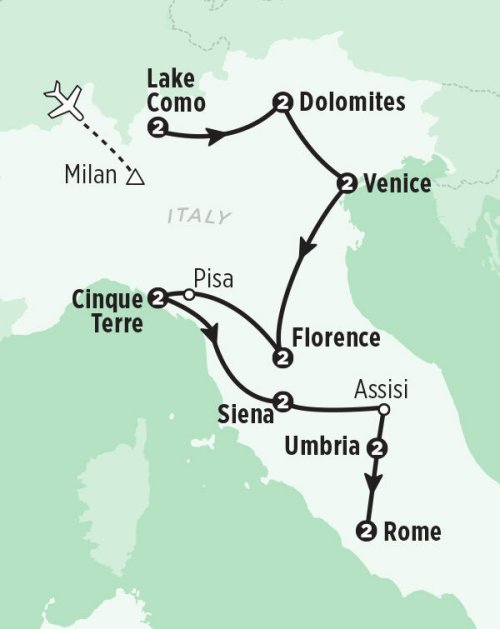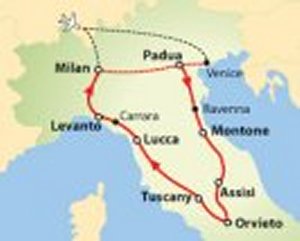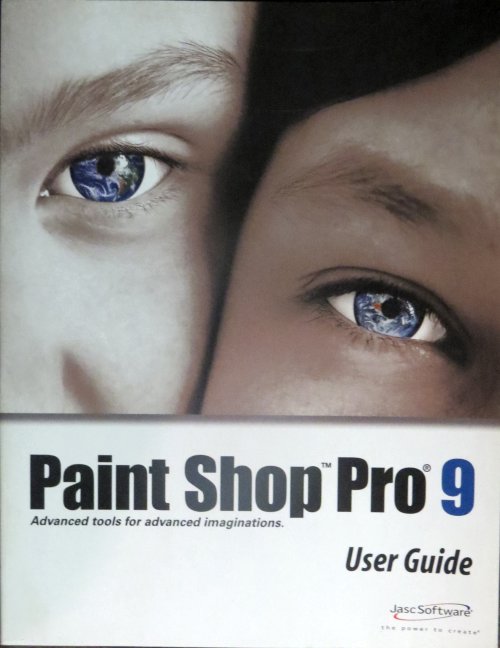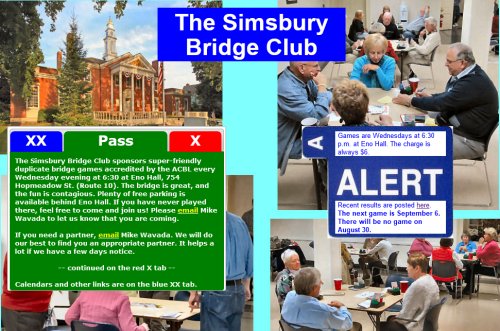My very own website. Continue reading
In 2003 Sue and I took the “Best of Italy” tour sponsored by Rick Steves. I then wrote a journal compiled from the notes that I had recorded every day. After I was satisfied with the results I assembled them into a pdf file called “How I spent my Italian vacation” that I shared with other tour members and a few other people. That document is posted here.
The programming tools: During this same period IBM discontinued support for the Net.Data product that I had used to write the software for AxN (introduced here), TSI’s online clearinghouse for insertion orders from advertisers to newspapers. Instead, IBM had agreed to offer the php environment that had been developed by Zend1. I had previously learned about php from Ken Owen (Introduced here). He had told me that I could create and run php programs on my Windows computer for free by downloading WAMP, which stands for Windows (operating system) Apache (HTTP server) MySQL (database) php (scripting language). I downloaded it to my PC, set it up, and used it to write a little problem management system for TSI that was actually used for several years.
I had already learned that in order to do programming for the Internet that accessed a database you really need to know five languages: HTML, JavaScript, Cascading Style Sheets (CSS), SQL, and a scripting language to fit all the pieces together. I had books that documented the first three. I soon discovered that books on php and MySQL were not necessary. The syntax of each was thoroughly documented online, and answers to every question that I had were easily found using google. I never had to ask anyone for help.
The first project: Sue and I had planned for another trip to Italy in 2005. This time we invited our long-time friends Tom and Patti Corcoran to accompany us on another Rick Steves tour, “Village Italy”2. I intended to take notes and assemble them into another journal. This time, however, I wanted to do it a little more professionally. I purchased a Cascio point-and-shoot digital camera, mostly using points from one of my credit cards. Since I wanted to allow others in our tour group to be able to enjoy the journal, I needed to build a website. I knew how to do that on an AS/400, but I wanted projects like this to be independent of the business, and I was not about to buy an AS/400 and try to run it from my house. I wanted someone else to manage the site for me.
I did a little research on the Internet. A company named iPower seemed to offer everything that I needed at a fairly reasonable price. Its tools seemed to be well documented, and, especially for the first few years, the technical support was excellent. My first contract with them was signed in July of 2005. I might have had a free month or two before that.
I decided to name the website Wavada.org. Wavada.com was available, but I had no intention of using the website to make money. I wanted to a place to noodle around with Internet programming (my personal computer, which at the time was a laptop) and a separate place where I could show some of the things that I had developed to the world.
I needed some tools on my PC to let me edit the text and images. I had previously downloaded TextPad, a “shareware” (free but with requests for donations) product that was better at editing text than the program that came with Windows. I purchased a copy of UltraEdit, which could be tailored for use with the color-coded and spaced text of php scripts, and Paint Shop Pro, an inexpensive program for editing image files. My plan was to do all of the development on my PC and, once everything was working, upload everything to Wavada.org using either File Transfer Protocol (FTP) or the File Manager program that iPower provided.
The first journal: My first big project used php to create one web page for each day of the 2005 trip. I created a folder named Images and inside of that folder a folder the trip (VI). Inside the trip folders were folders for each day (VI01, VI02, etc.) and one each for the full-page version of the photos3 and the page (VI00) describing the preparations and the travel day. I later wrote a php script that was included at the top of the code for each trip that. This contained all the common scripts for handling layout and navigation as well as the unique elements such as character sets for foreign words.
A separate php script for each page contained the code necessary to display the page. Most of the necessary functions were stored in a file named JournalFunctions.php. A file named JournalSetup.php contained other settings. These were all “required” on every page. Styles were stored in JournalStyle.css and JournalMenuStyle.css.
For the most part the original design worked fairly well. One difficulty that I had no way to anticipate was that the Unix version on the iPower servers was more sensitive to capitalization than the Windows version. I had to be careful with the file names assigned to images.
Twenty years later I find it astounding to report that I completed all of this within a few months. To each member of the tour group I sent an email that invited them to view the finished product on Wavada.org. Quite a few of them looked at a good portion of the journal and responded that they really liked it.
Other projects: I needed to design a home page. I knew that I wanted to have a huge wave as the background so that people would know how to pronounce the name Wavada. I found a photo of with very high density that depicted a monstrous wave better than I could have even imagined. It was on the Internet, but I don’t remember the location.
iPower offered an incredible array of free features that were associated with the website. The two that I made the heaviest use of were email and WordPress. I only needed to create three or four email accounts, but I made good use of them. I made Mike@Wavada.org my primary email account. Much later I created another account called Yoga (the name of my laptop at the time). Email sent to the Mike account was automatically downloaded to Outlook on my desktop. The Yoga account was not. So, I could send or forward emails from Mike to Yoga for activities (such as ZOOM meetings) that required the laptop.
I also set up an account for Sue, but I don’t think that she ever used it.
The other free feature that I employed a lot was WordPress, the software that I used to make this and hundreds of other blog entries. The oldest object in the WordPress section of Wavada.org is from 2010. However, I don’t think that I made much use of the product until March of 2012. That is the date of the oldest images that I uploaded. I might have written a few earlier blog entries that contained no images. An incredible number of these images—and a few other files—were uploaded during the pandemic and the subsequent months.
At first the home page for Wavada.org simply contained links to the few items that I wanted to allow the public to see. I changed the format dramatically when I discovered a widget that was available in google’s jQuery library. This allowed me to present the table of contents in an attractive tabbed manner.
I wrote a large number of programs concerning the game of bridge (introduced here) for my own use. For a while I maintained a complicated set of programs that I wrote to keep a detailed record of the bidding agreements with my partners. Eventually I decided that this was too much work (as of 2023 I had played with 141 different partners). I also created online programs for displaying an article index for topics covered in the Bridge Bulletin (posted here) and for providing game plans for challenging declarer problems (posted here).
I figured out how to parse the pdf files for hand records from bridge games. I created a database of these hands so that I could establish probabilities to associate with certain bridge situations. For example, I determined that Losing Trick Count4 was more accurate at predicting the number of available tricks at game level or lower than point count that has been modified as suggested by Marty Bergen in his Slam Bidding Made Easier book. However, the opposite was true for higher contracts.
I started to attend Wednesday evening games at the Simsbury Bridge Club in 2004. At some point I created a webpage for the club. It was still in use in 2023. The link is here.
As an adjunct to my job as webmaster I created a database of bridge players throughout North America on Wavada.org for District 25 of the American Contract Bridge League (ACBL). That story has been chronicled here.
I adapted the code for the travel journals to create online pages for each chapter of the book that I wrote on papal history entitled Stupid Pope Tricks. The book is posted here. The story of the Papacy Project that led to its creation is chronicled here. I also posted in the same format Ben 9, my historical first-person novel about Pope Benedict IX, here.
1. In 2023 this product is still offered for the i5 operating system. Zend has been purchased by other companies a few times.
2. The journal for the 2005 tour is posted here.
3. I used the same file names that Cascio provided with the letter b at the end. For later journals I dispensed with the uploading of the smaller versions of the photos and instead uploaded a full-page version of each image and used HTML to specify the size displayed in the journal. I also changed the naming of the images in the daily folder to be meaningful.
4. Losing Trick Count is explained here and elsewhere on the Internet and in print.










